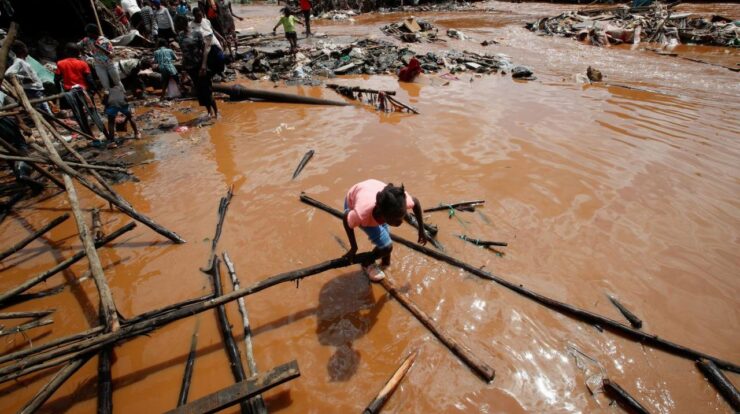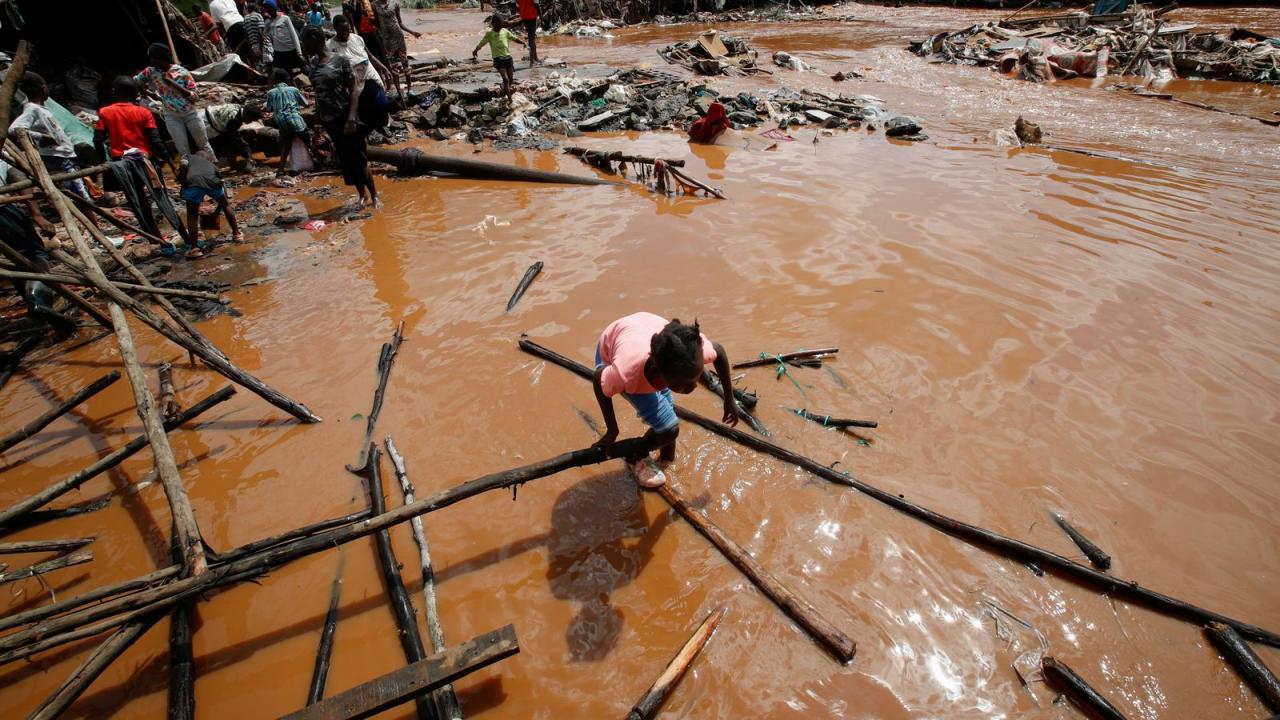
Kenya nairobi flooding – In the heart of Kenya, Nairobi, a city grappling with the relentless onslaught of flooding, a crisis that has become a defining challenge. This article delves into the causes, impacts, and mitigation strategies employed to combat this urban deluge, shedding light on the resilience and vulnerability of a metropolis at the mercy of nature’s fury.
Nairobi’s flooding crisis is a complex tapestry woven from heavy rainfall, inadequate infrastructure, and the ever-looming specter of climate change. The consequences are dire, with infrastructure crumbling, homes and businesses inundated, and the health and well-being of residents hanging in the balance.
Causes of Flooding in Nairobi

Flooding in Nairobi is a recurring issue that has significant impacts on the city’s infrastructure and residents. Several factors contribute to the city’s vulnerability to flooding, including:
- Heavy rainfall:Nairobi experiences heavy rainfall during the rainy seasons, particularly from March to May and October to December. These intense downpours can overwhelm the city’s drainage systems, leading to flash floods.
- Poor drainage systems:Nairobi’s drainage infrastructure is inadequate and poorly maintained, contributing to the city’s flooding problem. Many drainage channels are clogged with debris and waste, reducing their capacity to drain rainwater effectively.
- Inadequate infrastructure:The city’s infrastructure, including roads and bridges, is often not designed to withstand heavy rainfall. As a result, roads can become impassable during floods, and bridges can be damaged or destroyed.
- Climate change:Climate change is exacerbating flooding risks in Nairobi. Rising temperatures are leading to more intense and frequent rainfall events, increasing the likelihood of flooding.
- Urbanization:Rapid urbanization in Nairobi has contributed to the city’s flooding problem. As more people move to the city, impervious surfaces such as buildings and roads increase, reducing the amount of land available for rainwater absorption.
Impact of Flooding in Nairobi

Flooding in Nairobi has severe consequences for the city’s infrastructure and residents. The immediate impacts include:
- Damage to infrastructure:Flooding can damage roads, bridges, and buildings, disrupting transportation and access to essential services.
- Displacement of residents:Flooding can force residents to evacuate their homes, leading to temporary displacement and loss of property.
- Health risks:Standing water after floods can create breeding grounds for mosquitoes, increasing the risk of waterborne diseases such as malaria and dengue fever.
The long-term impacts of flooding in Nairobi include:
- Economic losses:Flooding can disrupt businesses and damage infrastructure, leading to economic losses.
- Environmental damage:Flooding can contaminate water sources and damage ecosystems.
- Social disruption:Flooding can disrupt communities and lead to social isolation.
Final Summary
Nairobi’s battle against flooding is far from over. The city stands at a crossroads, where bold action and innovative solutions are paramount. By embracing a comprehensive approach that encompasses structural and non-structural measures, leveraging community engagement, and harnessing data-driven decision-making, Nairobi can emerge from this crisis as a beacon of resilience, demonstrating that even in the face of nature’s fury, human ingenuity can prevail.
Expert Answers: Kenya Nairobi Flooding
What are the primary causes of flooding in Nairobi?
Nairobi’s flooding woes stem from a confluence of factors, including heavy rainfall, poor drainage systems, inadequate infrastructure, and the exacerbating effects of climate change and urbanization.
How does flooding impact Nairobi’s infrastructure?
Flooding wreaks havoc on Nairobi’s infrastructure, damaging roads, bridges, and buildings, disrupting transportation and essential services, and posing significant economic challenges.
What mitigation measures are being implemented to address flooding in Nairobi?
Nairobi is implementing a range of mitigation strategies, including improving drainage systems, constructing flood control structures, and implementing flood warning systems. Community-led initiatives also play a vital role in raising awareness and promoting preparedness.





